Cool Jobs: Explosive pursuits
These researchers study things that go boom — or poof!
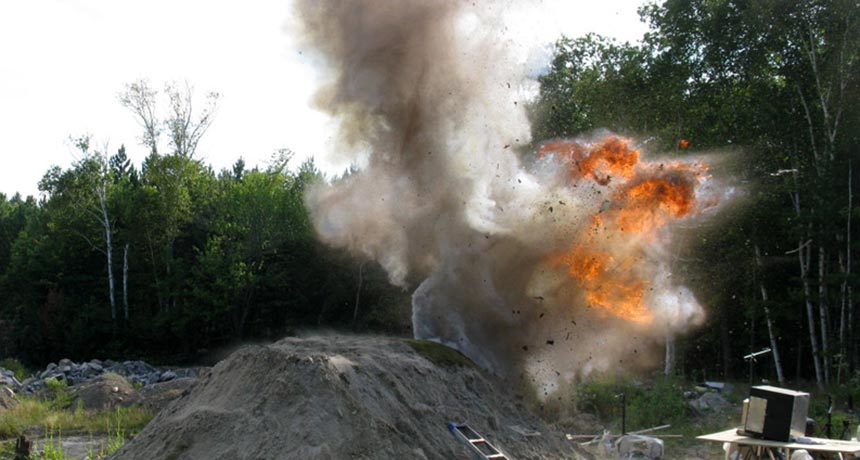
Mining engineer Bibhu Mohanty sets off controlled explosions as part of his job designing blasts that break apart rock.
Bibhu Mohanty
The bunchberry dogwood is the fastest flower on Earth. It literally explodes into bloom, firing off its pollen faster than a rifle can get off a shot — three times faster, actually. The bunchberry’s explosive blossoming even earned it a place in the Guinness Book of World Records.
“It’s so unexpected,” admits Joan Edwards, the botanist who helped discover the plant’s quick trigger. “You don’t think of plants doing anything fast. And here they do it so fast, you can’t see it with your naked eye.”
Edwards, a professor at Williams College in Williamstown, Mass., is one of a trio of researchers profiled here whose work involves explosions. While Edwards has been uncovering surprising details about how a plant uses explosions to gain an edge in reproduction, the second profiled expert focuses on keeping people safe from bombs. Meanwhile, the third expert puts explosions to productive use in mines.
While the three researchers follow different pursuits, all share a fascination with extremely fast and powerful events.
Poof!
For Edwards, it all started during a research trip to a national park on an island in Lake Superior, just south of the Canadian border. While there, one of her students took a close look at the tiny white flowers of the bunchberry dogwood, a common plant that carpets the floor of North America’s northern, forests.
“She stuck her nose in a bunch,” recalls Edwards. Then “she pulled back and said, ‘Something just went poof!’” Over the next two days, Edwards repeatedly videotaped the exploding flower, trying to figure out how it worked. But the flowers bloomed so quickly that she couldn’t follow what was happening. So Edwards loaded some plants into her car to study back at her laboratory.
Edwards and her husband, who had accompanied her on the trip, had to loop through Canada to get home. Recalls the biologist with a laugh, she warned him: “Don’t tell the border guards we have exploding plants.’”
As it turns out, the motion of the car triggered many of the flowers to explode along the way. Still, Edwards arrived home with enough to study.
She initially tried to capture the flowers as they exploded using a video camera that snapped 1,000 frames, or pictures, per second. All she got were blurry pictures. This camera simply wasn’t fast enough. So Edwards rented another camera that captured 100,000 frames per second. That did the trick, and the scientist soon discovered the flowers burst open in less than half a millisecond. A millisecond is a thousandth of a second. By comparison, a blink of the eye takes a pokey 400 milliseconds.
Looking at the quick-release flowers under a microscope, Edwards also discovered that one petal in each flower came with a tiny trigger. “If you just push that trigger to the side, the whole flower explodes up and throws its pollen into the air,” she explains.
Teaming up with a physicist at Williams College, Edwards studied the acceleration of the pollen grains and the height they can reach. The pair also probed how the floral system came together to create the perfect catapult. Ants aren’t heavy enough to trigger an explosion, they found, but bees and beetles are. Each explosive blossoming sprays the insects with grains of pollen before they head off to the next flower.
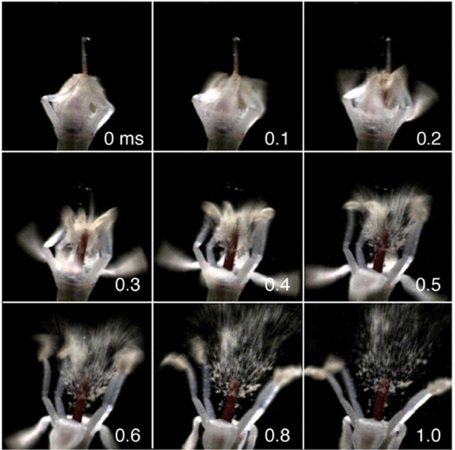
“It’s a clever way for a plant to spread pollen,” Edwards explains. Bees also travel faster than ants, she notes. So this plant “selects heavier, faster flying insects to carry the pollen.”
She has since gone on to study several additional exploding plants, such as impatiens and sphagnum moss. Still, bunchberry dogwood will always be her “first love in the exploding plant world.”
Kibosh on the kaboom
Of course, not all explosions spread life. Some sow death and destruction. Chemical engineer Yushan Yan works to keep people safe from the second type.
The University of Delaware researcher has created a device that can help sniff out telltale traces of trinitrotoluene (try ny tro TOL yu een). Better known as TNT, this chemical is an explosive used in bombs and landmines. One day, Yan’s device may help detect traces of TNT in the air, before any device containing the compound can detonate.
That ability would be useful in finding explosives, whether buried in a minefield or hidden in a suitcase being checked in at an airport. Today, conventional detectors can easily miss a tiny whiff of TNT in such open-air environments. Yan’s solution? Filter and concentrate enough pollutants from the air to the point where the faint scent of any TNT in it can be detected.
To do this, he turned to zeolite, a crystalline mineral that contains oodles of microscopic holes. Although zeolite occurs naturally and can be mined, Yan instead chose to make artificial zeolite. That way he could ensure its tiny holes were the exact size to filter molecules of TNT from the air.
“Zeolite is like a molecular sieve that can separate molecules precisely,” Yan explains. “They separate molecules according to their size.” So oxygen, nitrogen and carbon dioxide molecules in the air go through —leave behind only the TNT molecules.
To make his TNT filter and concentrator, Yan first coated a porous stainless steel cylinder with a thin film of zeolite. He then attached a tiny vacuum to suck in lots of air. The cylinder’s zeolite film traps any TNT molecules that might be in that air, boosting their concentration by 1,000 times in one minute.
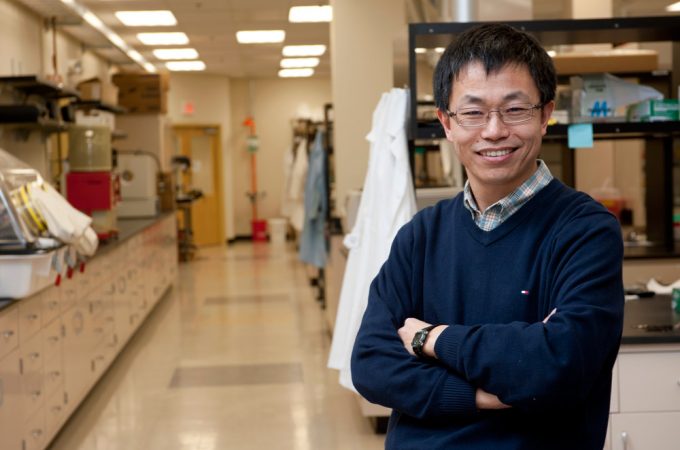
The hardest part of this project, Yan explains, was developing the recipe for cooking up zeolite with just the right-size holes. It required a solid understanding of chemistry. Yan also used mathematics to determine what shape canister would work best for concentrating the filtered chemical compounds.
Yan hopes his experimental, handheld device could one day help screen airline luggage for explosives. But that wasn’t the inspiration for his work. Instead, it was pure scientific curiosity. Only after Yan learned how to make a zeolite film did he go looking for a practical application. Explains the engineer: “It’s like I had a hammer in my hand and I wanted to find a job for it.”
Pow!
If Bibhu Mohanty wielded a hammer, it would pack an explosive punch. The University of Toronto mining engineer designs explosions to break apart rock. The blasts help in extracting gold, nickel, iron and other valuable materials.
Mohanty says he loves the challenge involved in making the energy of an explosion do “useful work.” The precise and careful explosions he designs have been used all across northern Ontario’s mining region.
The key to designing an explosion, Mohanty says, is first to combine a fuel (such as carbon) with an oxidizer (such as oxygen). The trick then is to make the two react with each other — burn — in a predictable way. Lighting a candle provides a tame example of this reaction. The candle’s wax supplies the carbon that burns when combined with the oxygen in air. However, to create an explosion, “the fuel has to burn really fast,” says Mohanty. In an explosion, he explains, that reaction occurs more than a million times faster than it does when a candle burns.
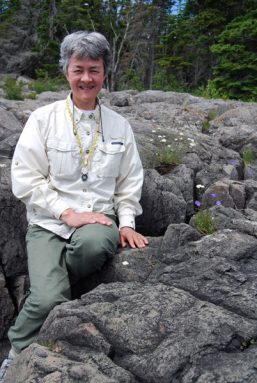
Such ultrafast but controlled burning creates very strong pressure waves. These pressure waves are many times more powerful than even the strongest rocks. So Mohanty’s controlled explosions can violently split apart any rock encountered while mining.
He also can fine-tune an explosion. By adjusting both the type of explosive and its design, he can make pressure waves that break up rock into just the right sizes for transport and processing. Different rocks, too, require different types of explosive compounds. To break apart granite, Mohanty needs a more powerful explosion than he would for, say, limestone.
To match the blast to the job, Mohanty has to understand geology — the study of Earth’s structure — to anticipate how certain rocks will fracture. Will they crumble into rubble or split into small boulders?
More than anything, Mohanty says, he draws on his education in physics (the nature and the properties of energy and matter) and engineering (the design, building and use of engines, machines and structures). For instance, splitting rock may require a series of small blasts rather than a single larger one. Mohanty’s understanding of the physics of shock waves can help him determine how to time each explosion to produce the right effect. His engineering studies help too when it comes to planning the size, spacing and number of drill holes that he will pack with explosives. Finally, he relies on all his expertise and experience to ensure blasting never harms buildings or people.
So far, Mohanty has never been involved in a deadly explosion. He says staying far, far away is crucial. An explosion can send rocks traveling great distances. And a blast’s pressure waves can break windows, rupture eardrums and even collapse lungs.
“No explosion is completely safe,” he warns.
Unless, of course, we’re talking about exploding bunchberry dogwoods.
Power Words
acceleration The rate at which the speed or direction of something changes over time.
botanist A scientist who studies plants.
pollen A flower’s male reproductive cells. These cells fertilize the pistil, the female reproductive part of a flower.
catapult A device for throwing or flinging something into the air.
physicist Someone who studies physics, or the nature and properties of matter and energy.
molecule The combination of two or more atoms, forming the smallest unit of any chemical compound.
atom The basic unit of matter.
porous Filled with pores, or holes.
combust To consume by fire.
carbon A nonmetallic element found in coal, oil, natural gas as well as in all known forms of life.
oxidizer A substance that yields oxygen, resulting in the combustion of another material, such as a fuel.
Word Find (click here to print puzzle)
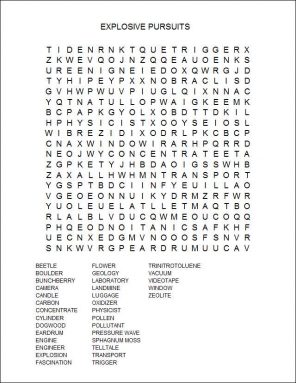
This is one in a series on careers in science, technology, engineering and mathematics made possible by support from the Northrop Grumman Foundation.







